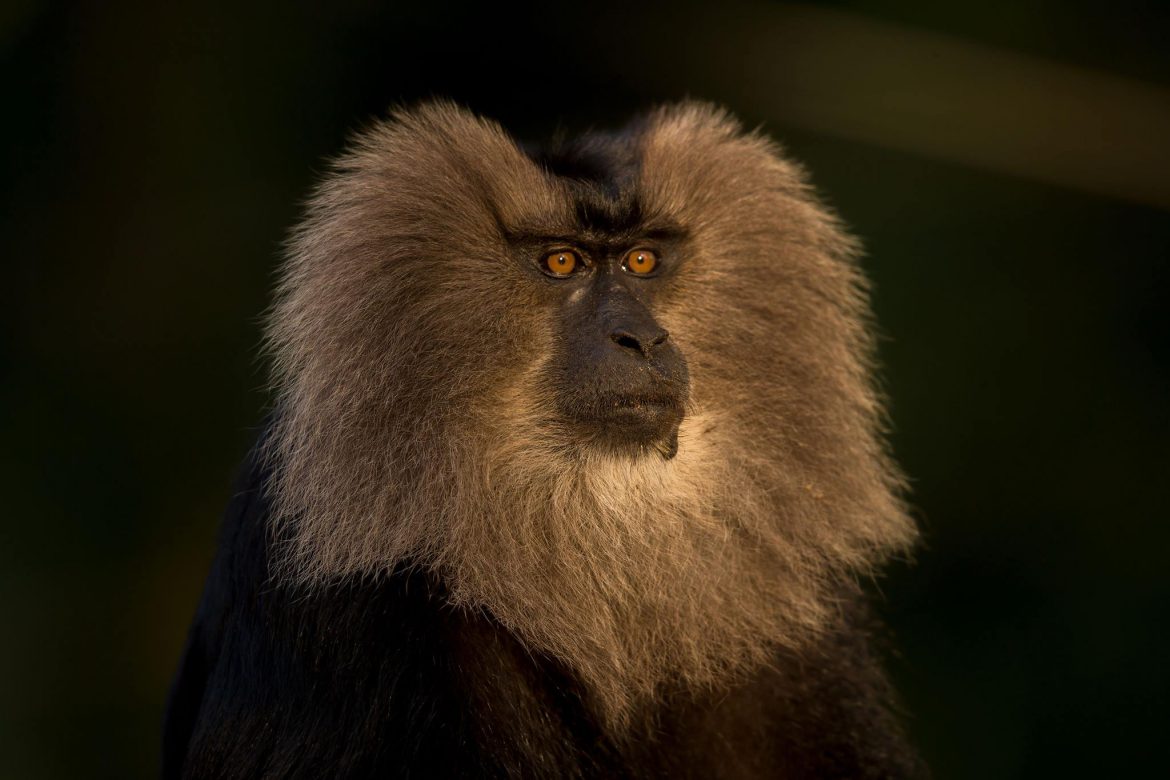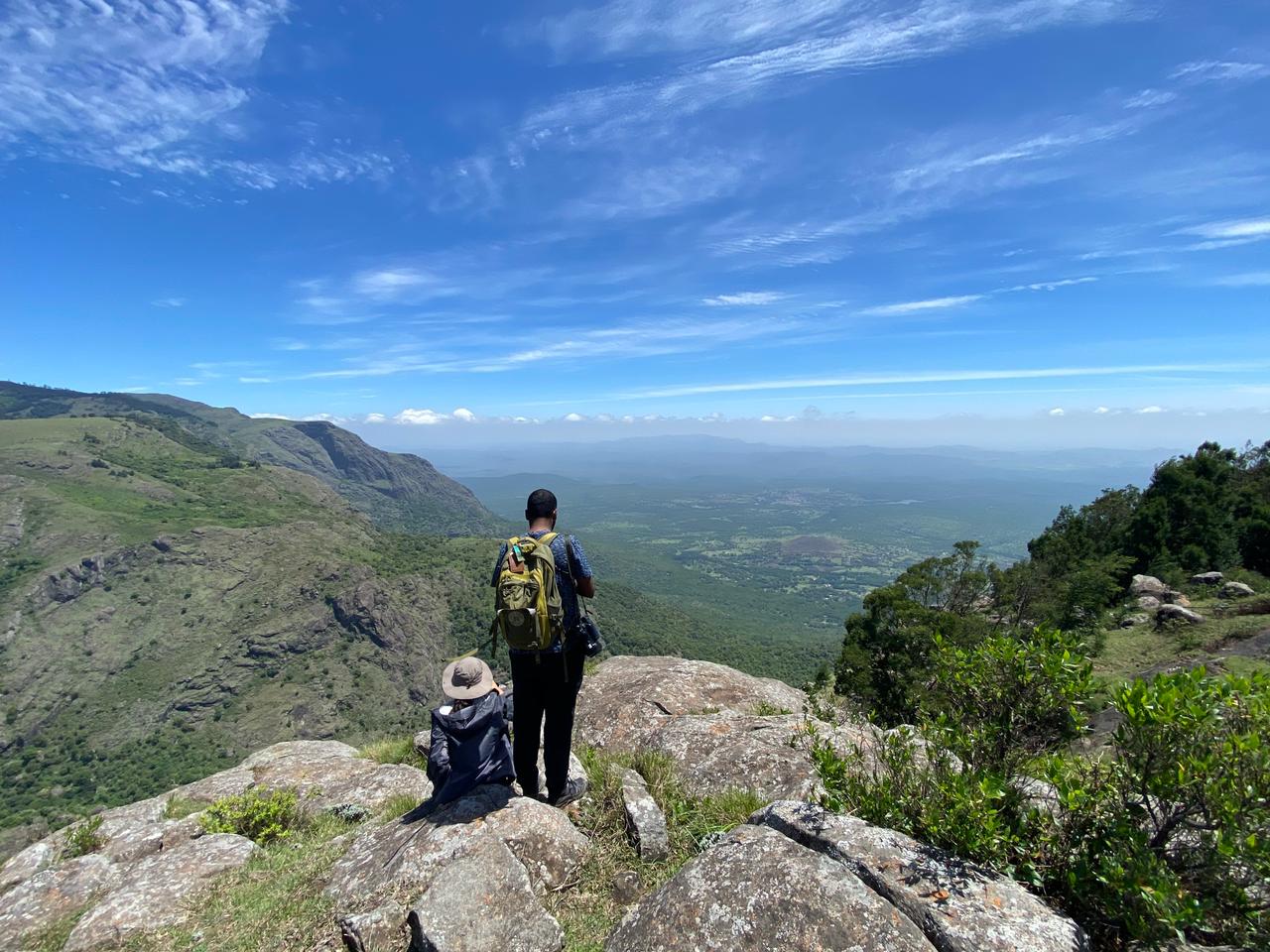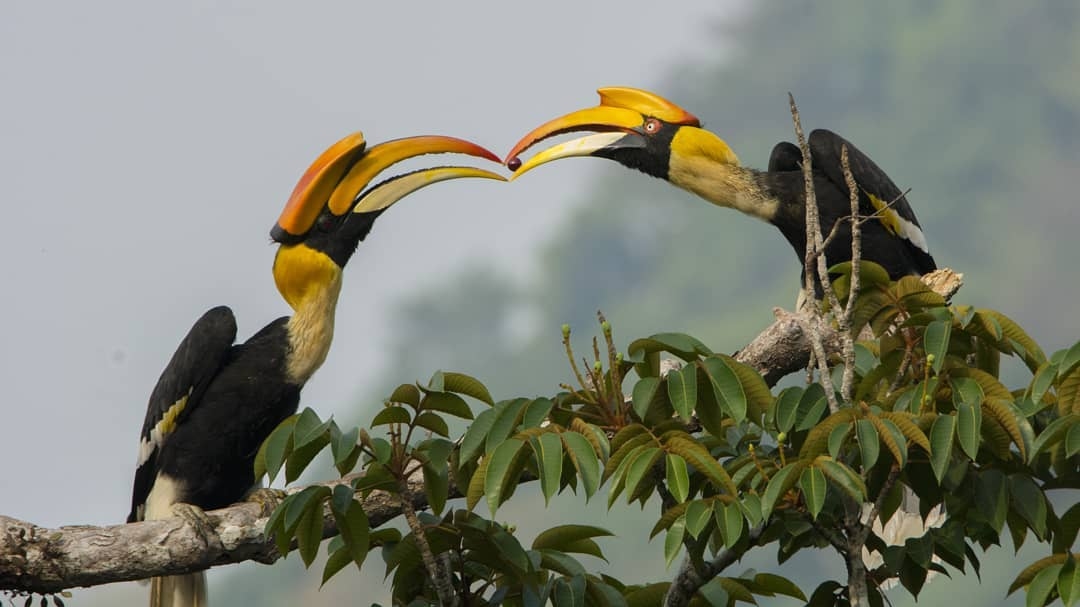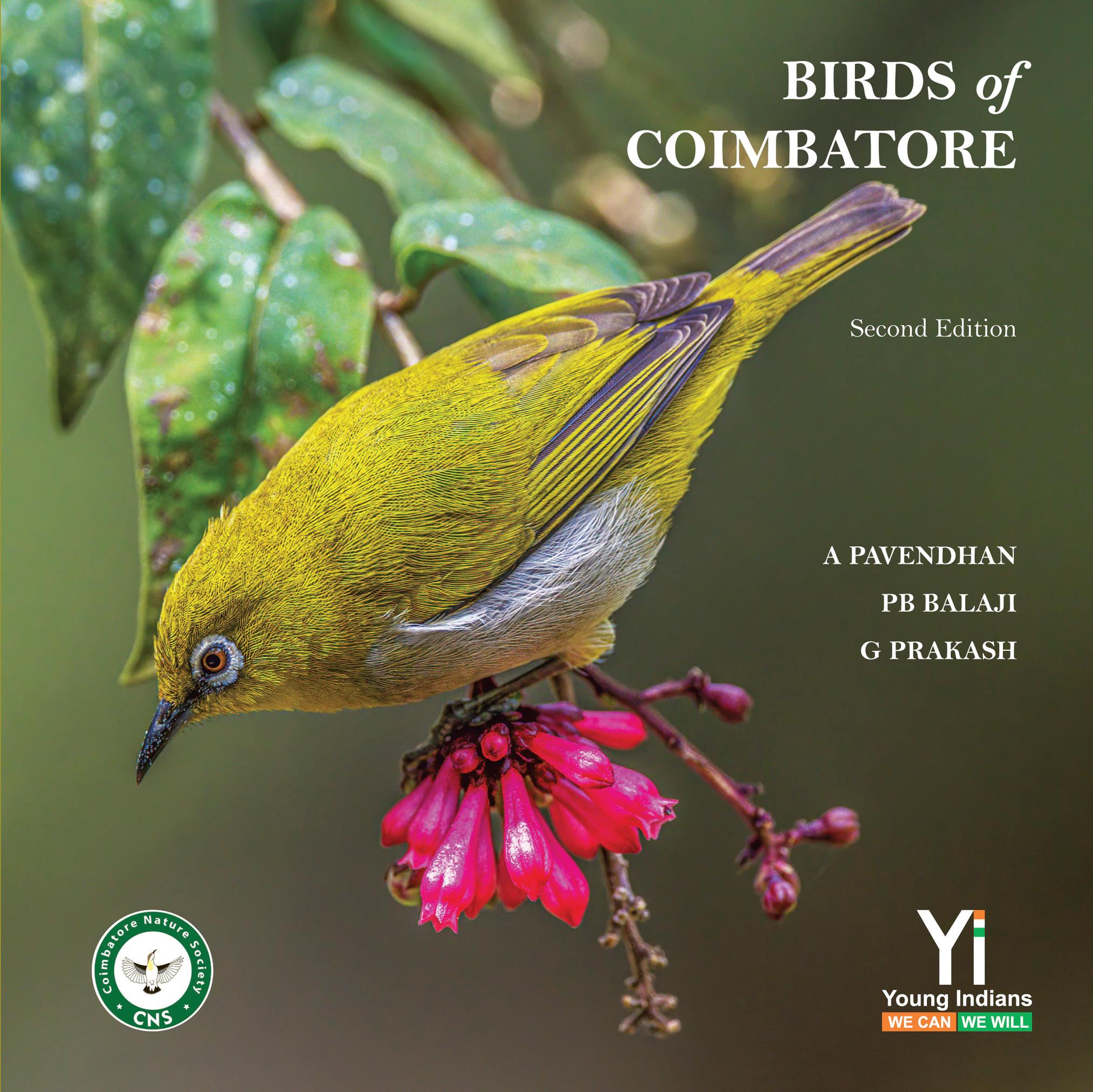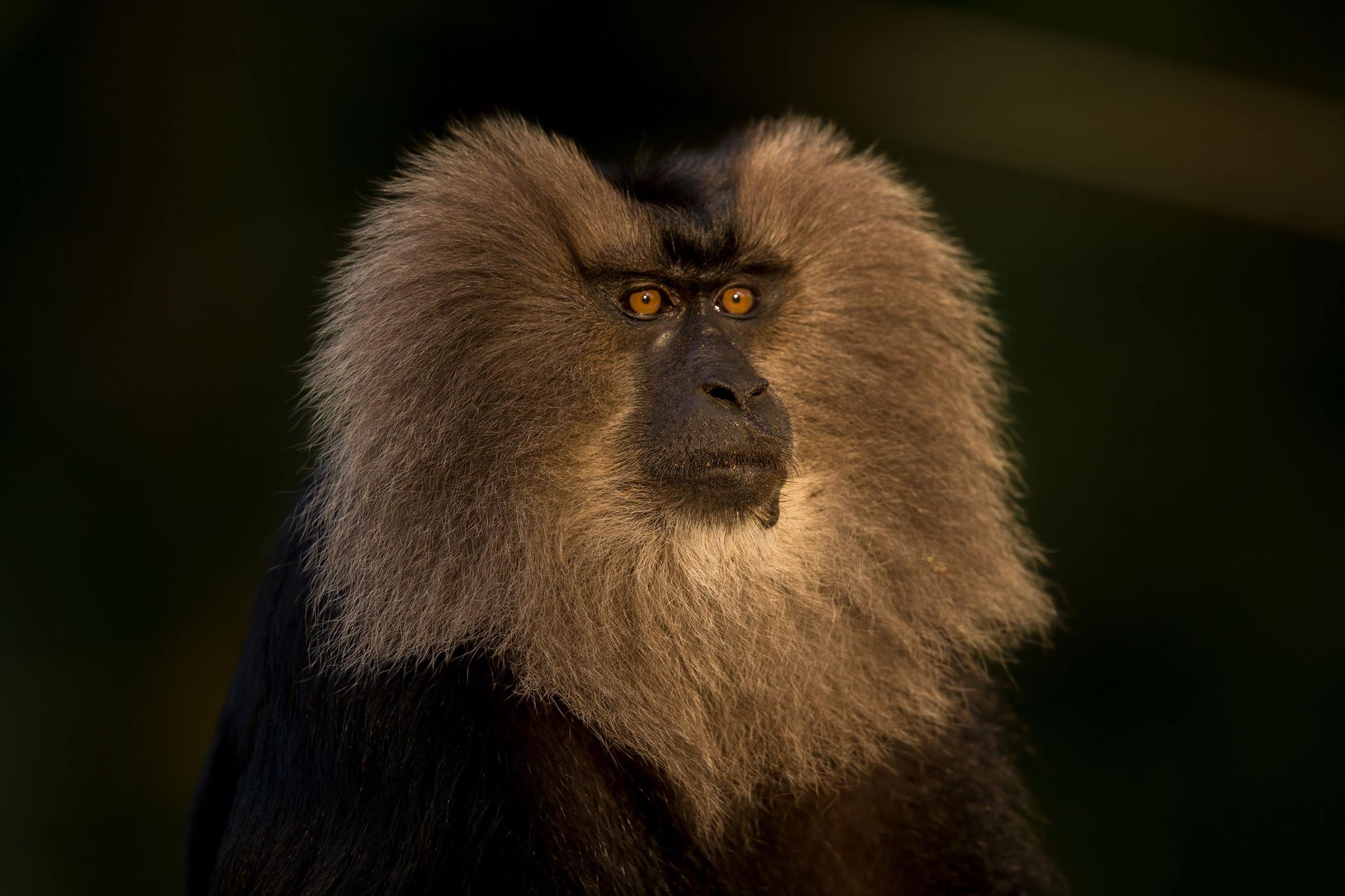In the remote rainforests of the Western Ghats lives one of the most rare and unique of primates – the lion tailed macaque. With a furless black face, expressive eyes, and a thick, shiny coat of black fur, this macaque gets its name from the mane of silver and grey that surrounds it’s face and tail that ends in a tuft like that of a lion’s.
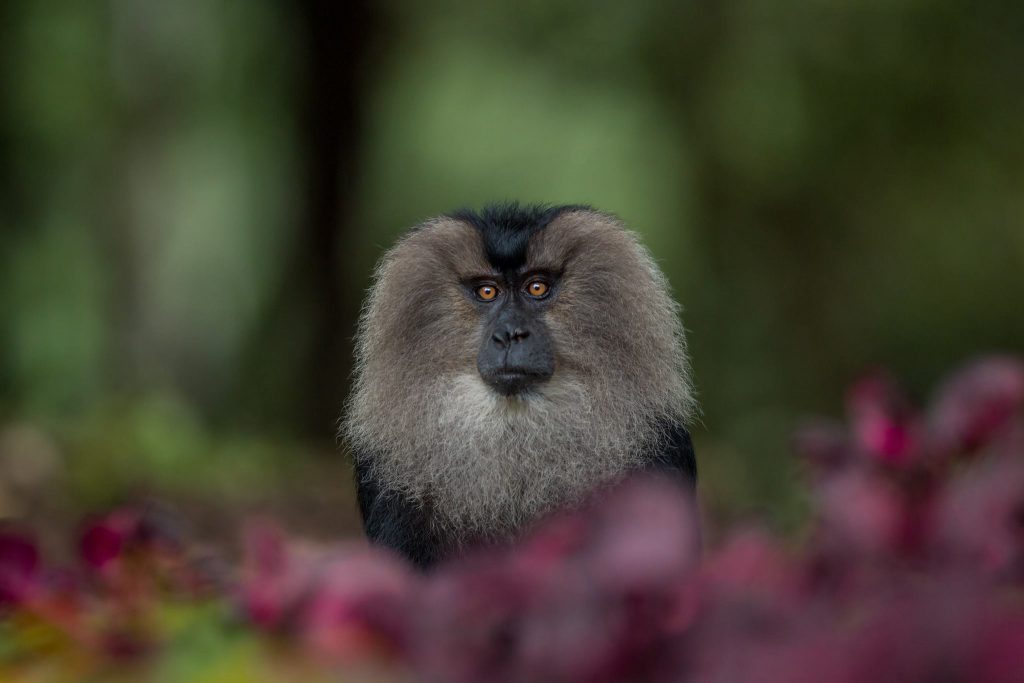
Considered by scientists as the only truly arboreal macaque on Earth, these elusive creatures usually occupy the tallest, shadowy rainforest canopies far from human sight. While manoeuvring through the canopy, these macaques carefully choose the branches to climb, avoiding perilous ones, and display skills that are sheer acrobatics. A diurnal species, the lion tailed macaque devote their time to searching for fruits and invertebrates, and occasionally socialise with members of their troop by grooming each other to keep their coats free of ecto-parasites and maintain the health of their pelage.
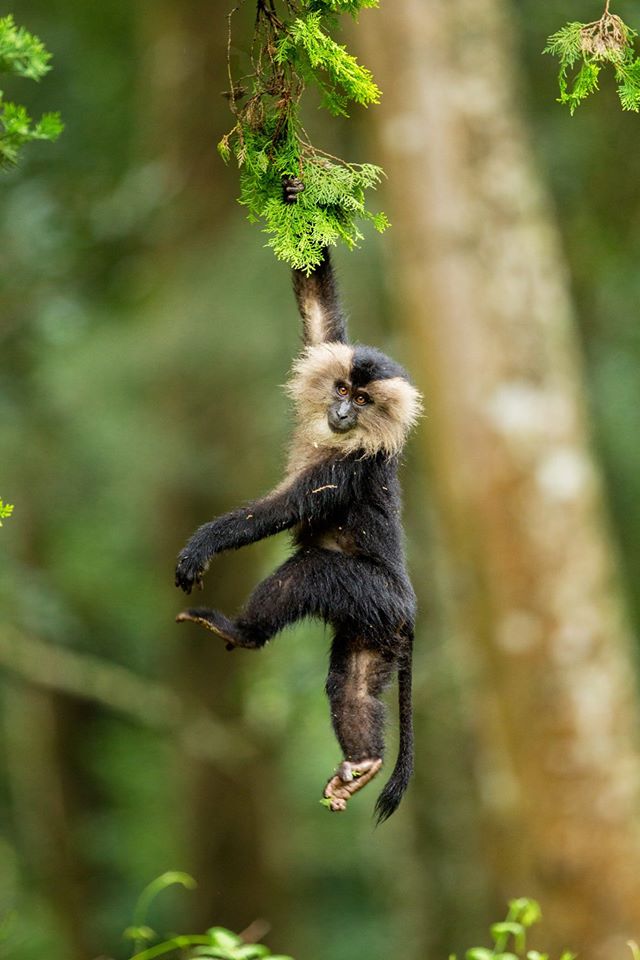
Lion-tailed macaques live in troops that usually consist of about 19-25 individuals, with only one adult male. When a male lion tailed macaque reaches sexual maturity at the age of six, as opposed to the females that reach sexual maturity at the age of 4, he disperses from the natal troop to find a new troop of his own. When the females are fertile and ready to mate, they develop a swelling at the base of their tail which provides an indication for the males, who subsequently mate with them, and six months later, the mother will give birth to her infant. When born, the lion-tailed macaque has a pink face which gradually turns darker, until the first year when it becomes completely black.
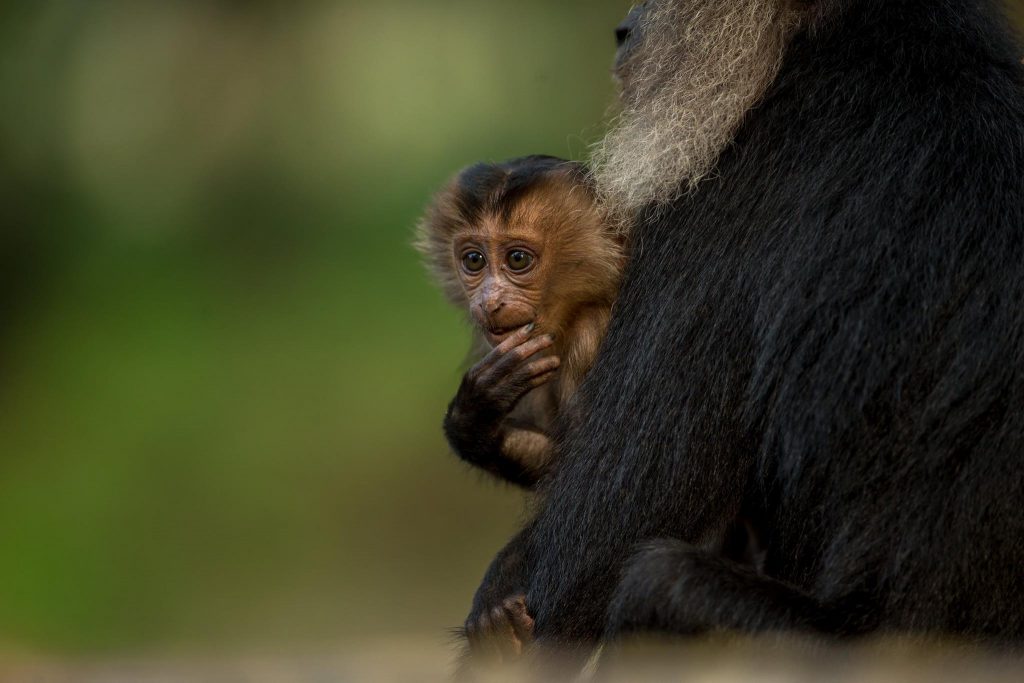
Throughout the day, during various activities, macaques keep in touch with the members of their troop by making vocalisations that have a distinct ‘coo coo’ sound. These sounds are thought to help individuals know the position of each other in the dense canopy. During bouts of movement, the frequency of calls increases drastically, which to an impartial spectator, sounds like an orchestra of cooing instruments.
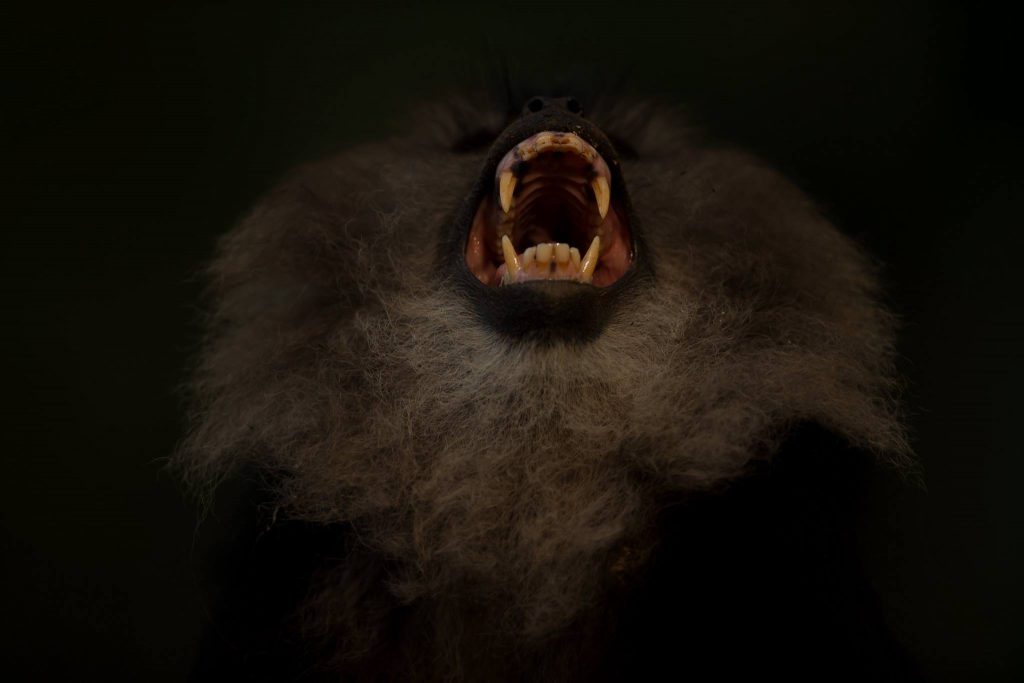
Being non-human primates, they exhibit a behavioural repertoire similar to human beings. Despite being one of the smallest species of macaques, an adult male when threatened, with canines bared, fur standing on end and tail erect, is a rather formidable creature to behold.
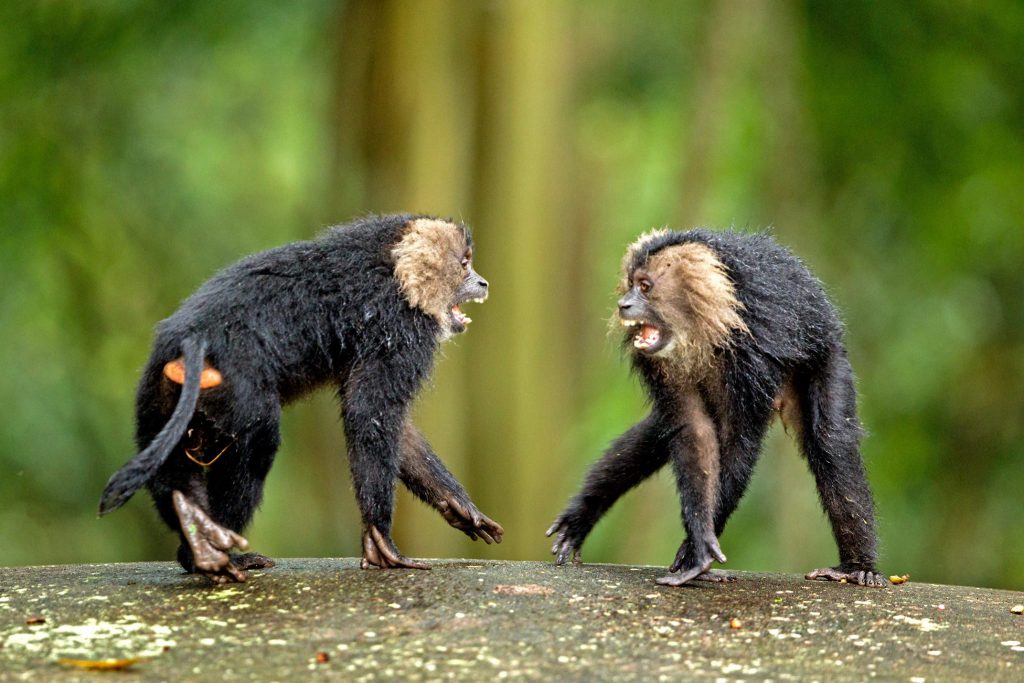
The aggression of a lion tailed macaque, more often than not, remains a mere behavioural display, as they rarely engage in physical fights, allowing them to save up on energy which is required to forage. The manner in which the mothers look after their infants with scrupulous care, and the playful wrestling that the young members of the troop indulge in are some of the interesting behaviours to observe.
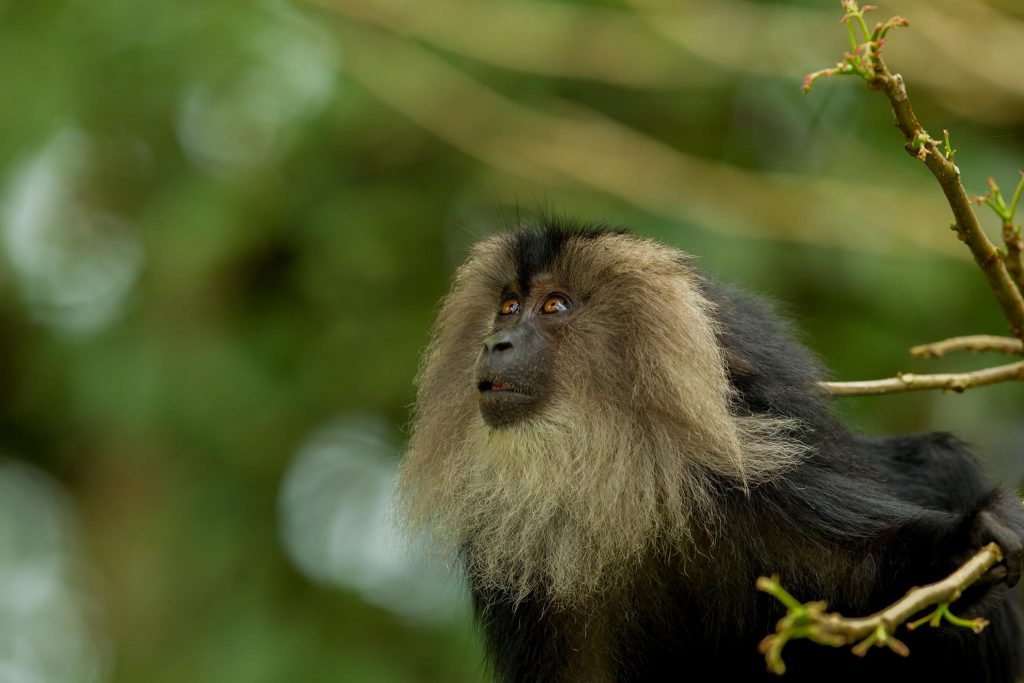
A glorious symbol of the diverse, rich rainforests of the Anamalais, the lion-tailed macaque’s complex social lifestyle and the various behavioural similarities they share with humans have found a special place for them in our literature, mythology, art and culture.
Threats:
Today, due to the extensive selective logging of our once contiguous rainforests that were cleared to pave way for tea plantations and human encroachments, these macaques have been reduced to just eight sub-populations spread across the forest fragments of the southern Western Ghats, making it one of the many endangered primates in the world. One such forest fragment is the Puthuthottam forest that neighbours the town of Valparai.
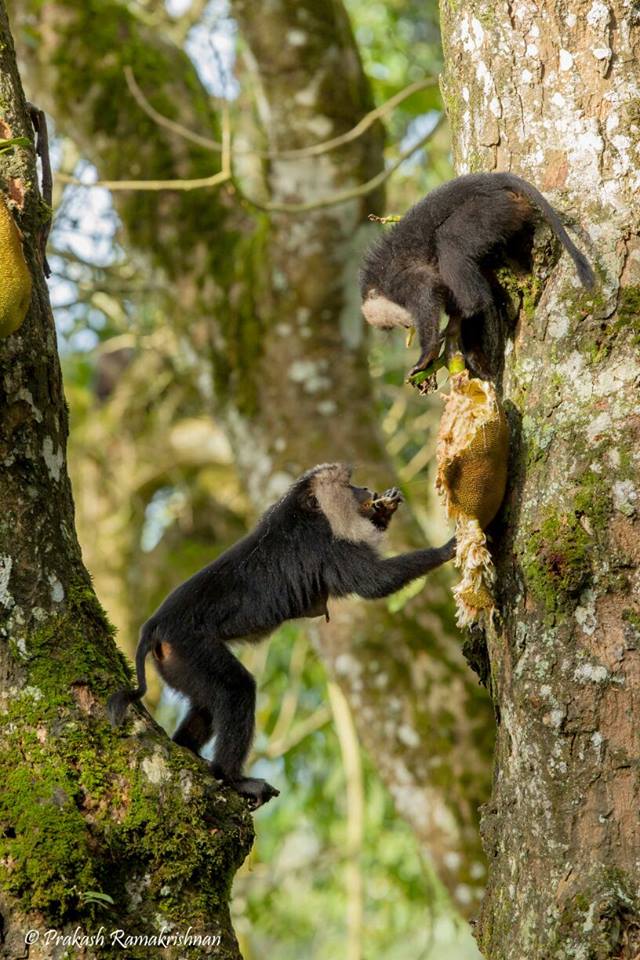
Being restricted in a forest fragment surrounded by tea plantations and human settlements, these individuals face a potential lack of food availability and the threat of vehicular traffic on the road which cuts right through the Puthuthottam forest.
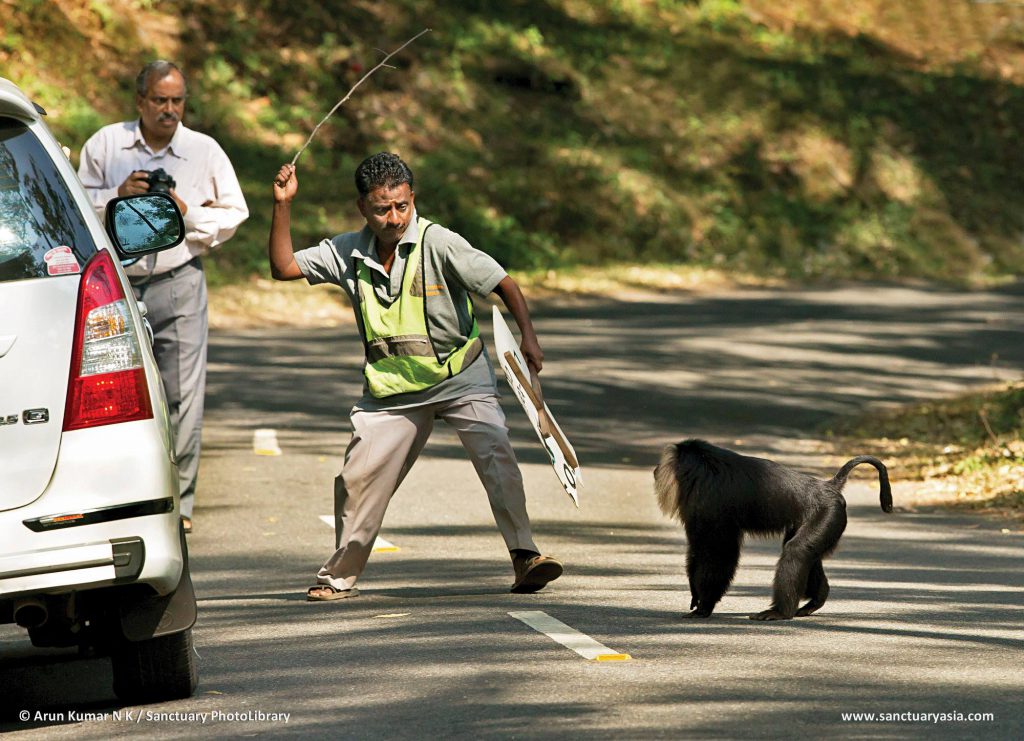
A few years ago, these extremely shy macaques were observed foraging amidst tall trees and dense canopies in search of fruits, seeds, young leaves, flowers and insects. Today, there is a drastic change in their behaviour and can be seen scavenging along roadsides and raiding labour colonies in the tea estates, in search of food, leading to close human interactions.
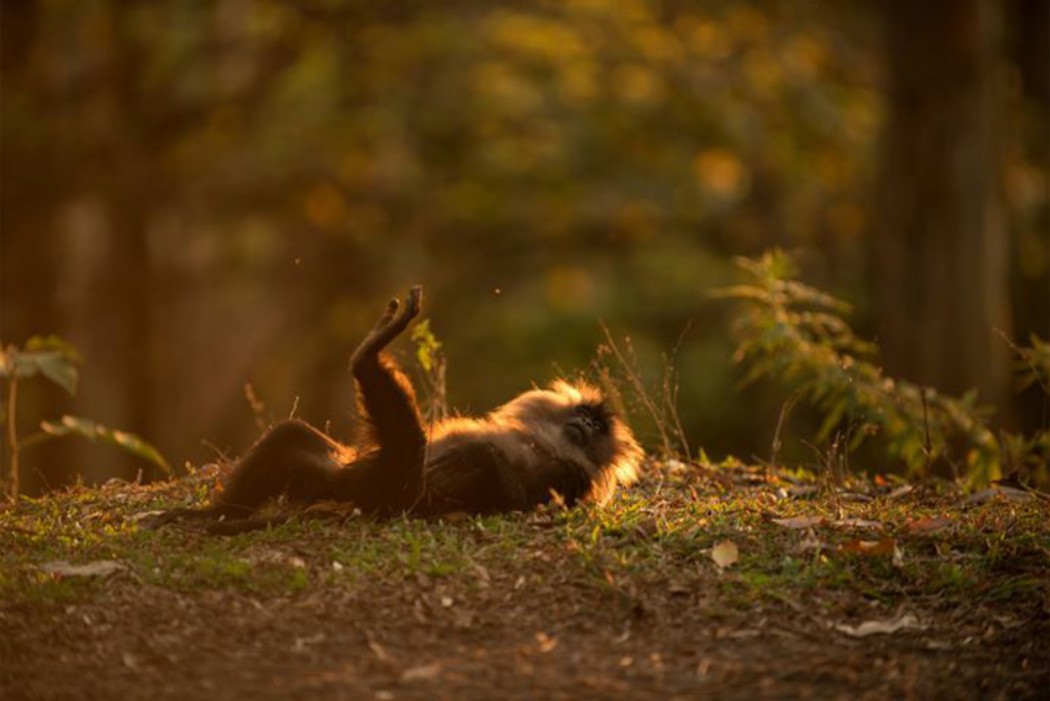
With such interactions come added perils like being fed by tourists and being killed by passing vehicles, the biggest threats to the macaques of Puthuthottam apart from forest degradation. Once fed by humans, there is little that can distract a hungry macaque, be it a two-wheeler zooming by, or even a lorry running at top-speed. Barring the physical danger that macaques face from being fed by humans, such food materials may also be detrimental to their health in the long run.
Conservation:
Nature Conservation Foundation, a non-governmental organization, has taken some measures to protect the macaque colonies of Puthuthottam, by incorporating information gained by long-term research studies to aid in conservation.

The organisation also employs local residents to direct traffic around Valparai when macaques approach roads, and have built ropeways connecting the forest canopy for the macaques to cross without having to negotiate the road where they run the risk of getting hit by passing vehicles.
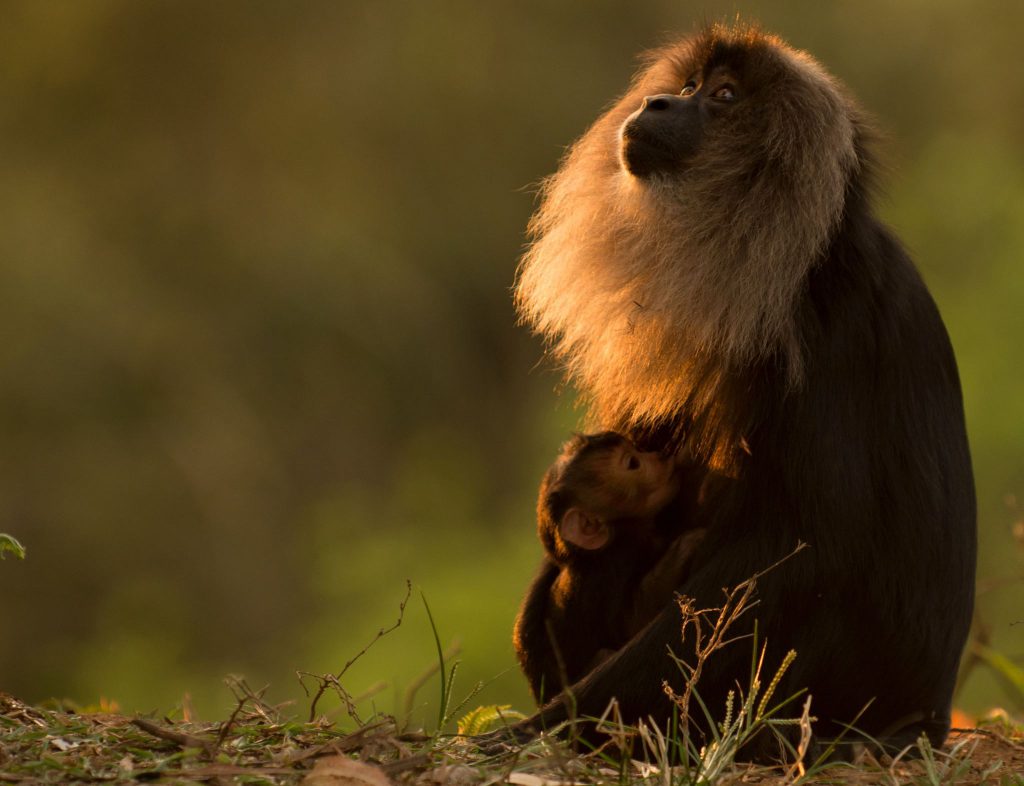
Though the lion tailed macaque are highly adaptable, there is a limit to the changes that they may be able to deal with. Understanding that vulnerability, combined with the implementation of long-term management strategies is the first step in conserving this rare and unique species of primate.
About the series – Icons of Anamalais:
A treasure house of bio-diversity, the Anamalai’s region of the Western Ghats is home to a spectacular array of wild species, some rare and endemic, that are found nowhere else on Earth. “Elephants Hills” as it is literally translated, the region is one of the most picturesque landscapes in the country that hosts a broad variety of ecosystems ranging from tropical wet evergreen forests to sholas and montane grasslands to dry, scrub jungles.
Home to the large mammals like the Asiatic Wild Elephants, Indian Gaur, the endangered species like the Wild Dogs, Nilgiri Tahr and Lion Tailed macaques, Anamalai’s is also first to be home to all 16 endemic bird species of Western Ghats.
This series of articles by The Pollachi Papyrus, celebrates the iconic birds and mammals of the Anamalai’s –a unique ecological tract and a global bio-diversity hotspot that needs protection and conservation.

